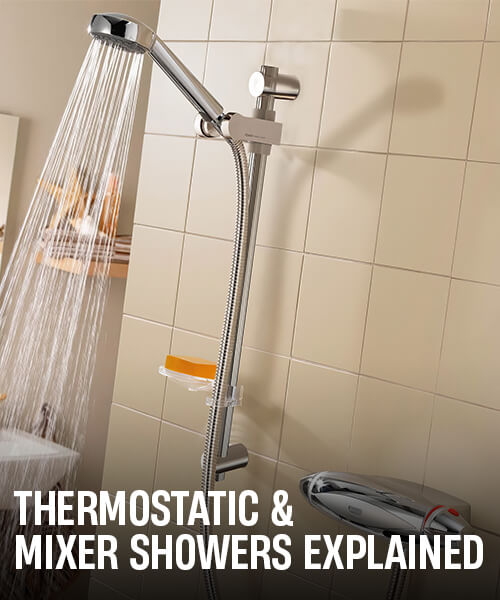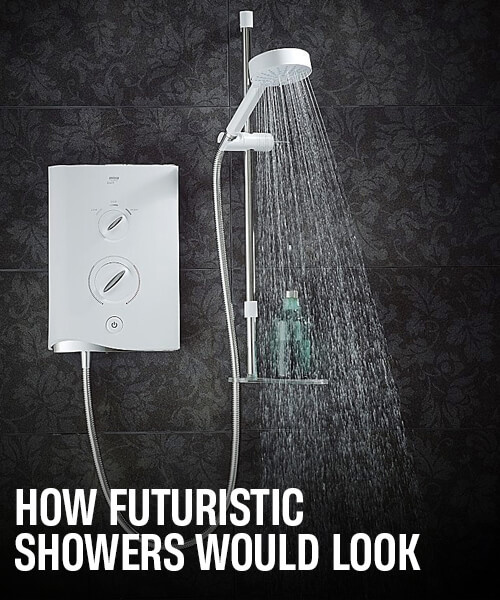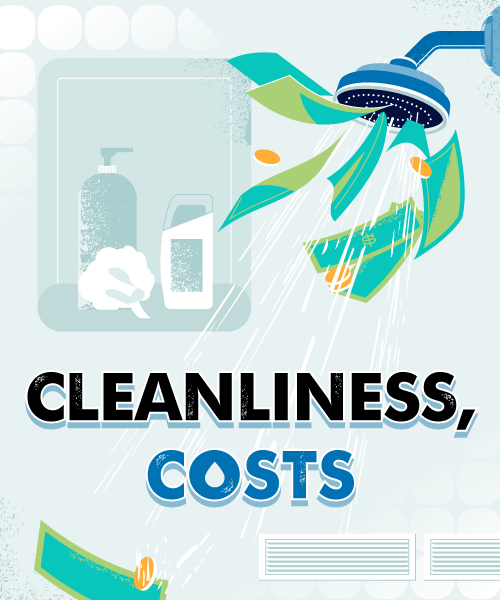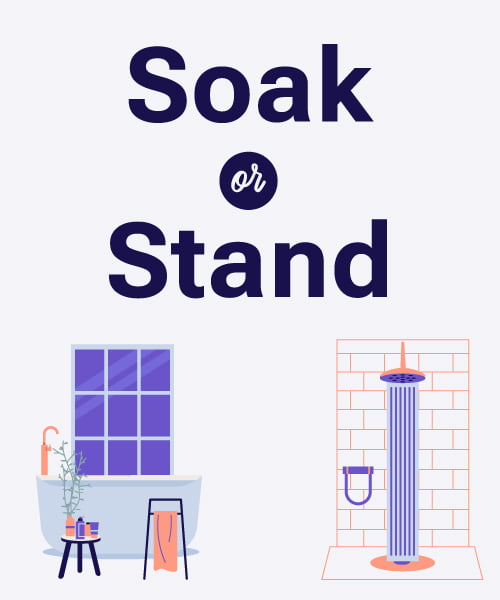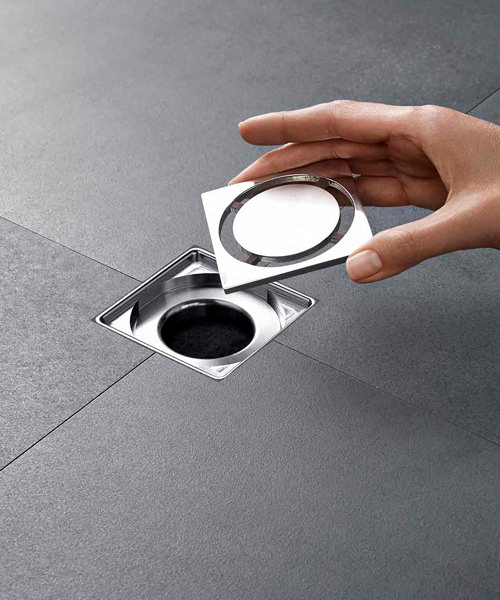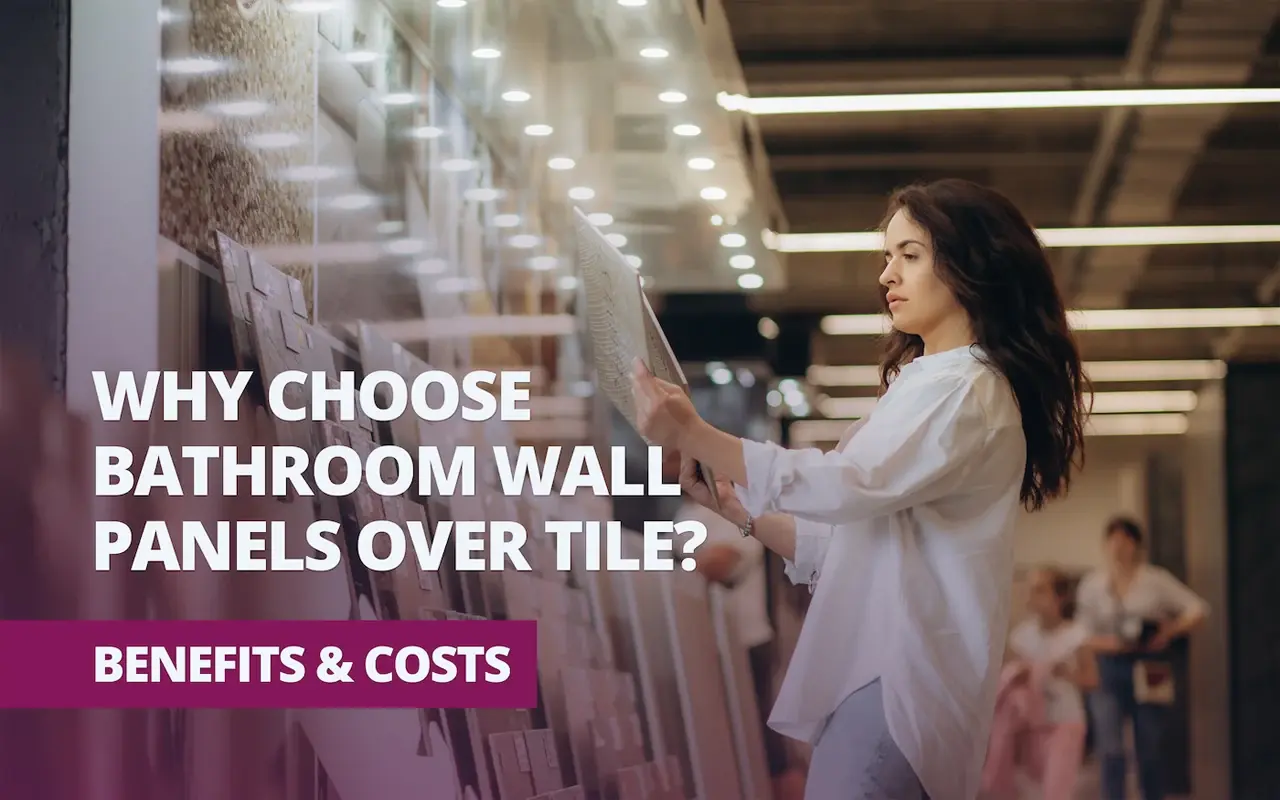
As a popular and stylish alternative solution to traditional wall tile, bathroom wall panels are rapidly gaining ground as the preferred choice among homeowners. Unlike grouted tiles which will always require ongoing maintenance, wall panels give a grout-free finish, water-resistant and hassle-free cleaning, and hence are ideal for busy households.
Wall panels are cheaper and easier to install than tiles, saving labour time and total project cost. With fewer materials and no grout, they additionally reduce long-term maintenance bills.
Apart from their functionality, bathroom wall panels are compatible with many designs. They are available in various colours, textures, and finishes. They can complement shower enclosures and a basin vanity or create a feature wall in a wet room. Generally, shower panels can enhance affordability and durability while at the same time portraying a sleek look.
Read on to discover why water closet wall panels are a smarter option than tiles and discover their cost, installation, maintainability, and design benefits.
What Are Bathroom Wall Panels?
Bathroom wall panels are large sheets that can cover walls just like traditional tiles. But unlike tiles, which have to be individually sized and grouted, wall panels come in larger sizes and can be installed quickly.
Wall panels are typically manufactured using standard materials like PVC, acrylic, laminate, or FRP, which improve durability while giving an aesthetic finish. Bathroom wall panels are more useful in wet rooms and high-moisture zones like alcoves, tub wall surrounds, and wet walls. Due to their water-resistant surface, they can also be installed in shower enclosures with and without shower doors.
In addition to functionality, shower wall panels improve the modern bathroom look. Since they are produced in a variety of finishes, ranging from a classic marble effect to traditional grey concrete designs, homeowners can achieve a custom look in any space they choose to install the panels.
Combining style and functionality, bathroom wall panels have become a multi-use product that is useful for temporary makeovers and new renovations.
Benefits of Bathroom Wall Panels
Bathroom wall panels are an affordable and stylish tile replacement. They can fit both in new bathroom installations or in ongoing renovations. Their ease of installation, low maintenance, and variable designs make bathroom wall panels a good material for modern bathroom design.
- Lightweight and straightforward construction. They are quite light and fit easily on top of other surfaces. Besides, installing wall panels does not require advanced equipment or tools and can be done as a DIY project.
- Low maintenance and mould resistant. There are no grout joints for dirt and water to collect in. This makes bathroom wall panels easy to clean and resistant to mould growth.
- Budget-friendly tile substitute. Bathroom wall panels provide you with a durable finish at a lower cost than you would incur for tiling.
- Versatile design options. Due to the huge selection of colours, textures, and finishing options, wall panels may be incorporated in different surfaces, including modern bathrooms and traditional décors.
Bathroom Wall Panels vs Tile
When planning bathroom renovations, homeowners have to decide whether to use bathroom wall panels or traditional tiles. While both have their distinct advantages, they also differ in terms of cost, maintenance, application, and performance.
The table below compares bathroom wall panels vs Wall Tile:
| Comparing Bathroom Wall Panels vs Tile | ||
|---|---|---|
Category |
Bathroom wall panels |
Tile |
Cost |
Generally more affordable with lower labour costs |
Higher cost due to labour-intensive installation |
Installation time |
Quick to fit, often placed directly over existing surfaces using corner trim and minimal tools |
Time-consuming, requiring careful placement, grouting, and sometimes custom cutting around shower pans and enclosures |
Maintenance |
Easy to clean with no grout lines; highly resistant to mould |
Regular scrubbing and regrouting are required to manage mould and stains |
Water resistance |
Panels are fully water-resistant and ideal for wet areas |
Tiles are water-resistant, but grout lines can absorb moisture over time |
Mould risk |
Minimal risk since there are no porous grout lines |
Higher risk in grout lines, especially in humid spaces like a tile shower |
Style options |
Wide variety of finishes and textures, from marble to modern effects, matching bathroom wall panels to any décor |
Classic look with endless patterns, but limited by grout lines and longer installation |
Popular Types of Bathroom Wall Panels
Bathroom wall panels come in different types of materials, which have diverse benefits depending on the design and configuration of the bathroom. Choosing the right material is crucial since it can affect the durability and style of various surfaces, including wet areas and shower panels.
Examples of available designs include pale light grey, herringbone, white gloss or luxurious Carrara marble finish. Some of these designs can be used outside of the bathroom, including on living room feature walls.
Common types of bathroom wall panels include:
- PVC wall panels. Light, inexpensive, and easy to install, PVC panels are suitable for DIY projects. They also tend to fit in numerous bathroom designs, including small spaces.
- Acrylic panels. Due to their smooth, glossy finish, acrylic panels give a good quality finish and suit ultra-modern bathrooms. White gloss or white sparkle acrylic panels can help bring out a sleek look.
- Laminate panels. Laminate panels mimic natural materials like stone or timber. Popular laminate styles like Carrara marble or herringbone are best suited for wet wall applications and feature walls. Laminate panels are also a cost-effective and water-resistant option.
- Fibo panels. Fibo panels combine laminate finishes and a water-resistant core and provide shape and style for shower enclosures and large-scale bathroom refits. Fibo panel finishes, such as light grey, provide a sleek, minimalist appearance.
- FRP panels. Fibreglass-reinforced plastic is durable and low-maintenance. It's more suited for workrooms or bathrooms where long-term performance is needed.
How To Install Bathroom Wall Panels
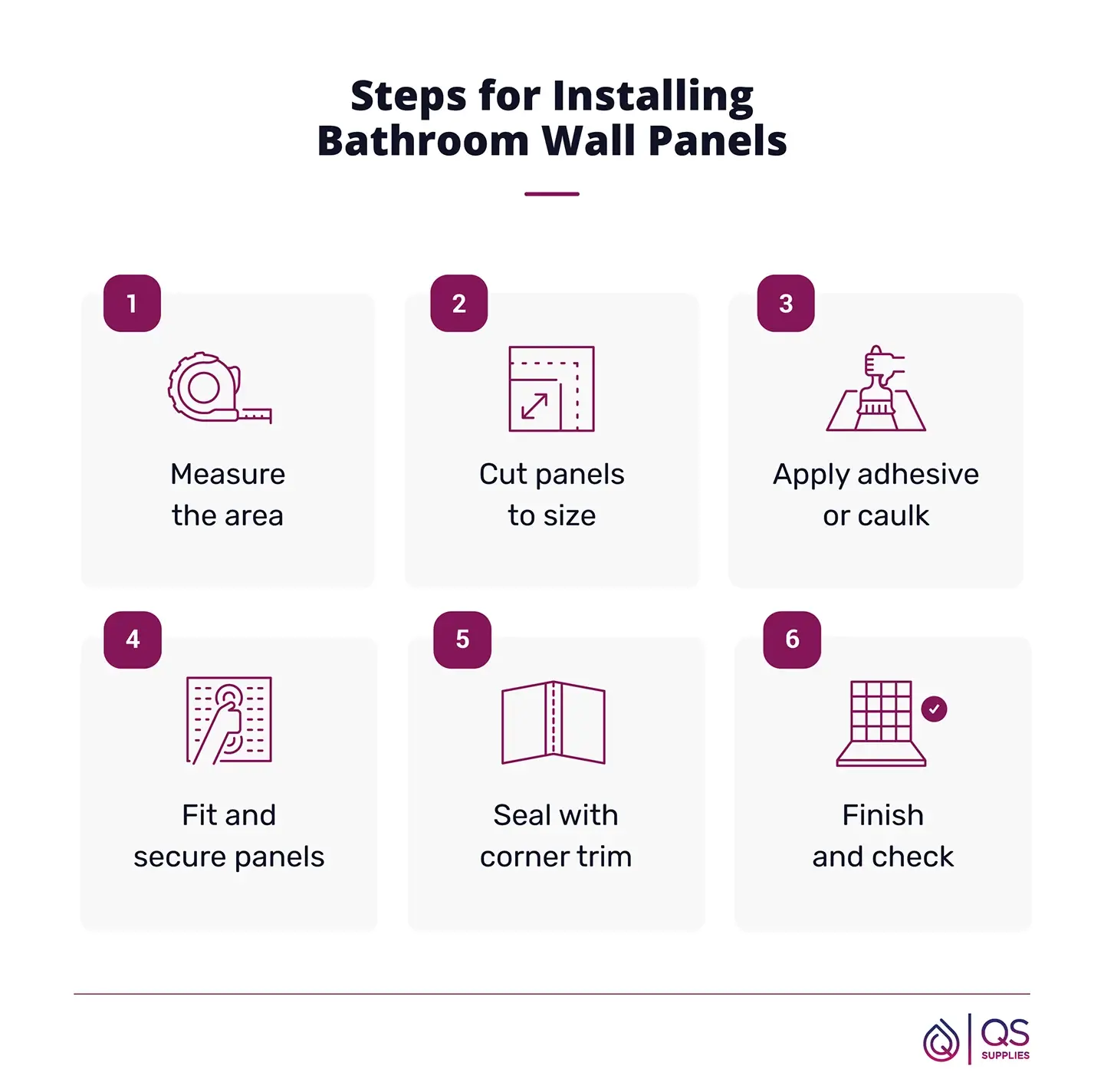
Bathroom wall panel fitting is a straightforward task, which DIY homeowners can carry out. If you have appropriate equipment, install wall panels over drywall or existing materials and achieve a smooth finish.
To install bathroom wall panels, you should:
- Measure the area. Make proper calculations of the wet area or wall to understand how many panels you need. Make sure to factor in fittings and fixtures.
- Cut the panels to the required size. Trim the panels with a utility knife or fine-toothed saw for a precise fit. Pre-assembled tongue-and-groove panels make lining up easier.
- Use caulk or adhesive. Apply adhesive uniformly at the back of the panel or directly on the wall surface. A good quality waterproof sealant can provide a long-term grip.
- Install and secure panels. Hold each panel up against the wall, pushing tongue and groove edges firmly together for a smooth finish.
- Seal with corner trim. Use corner trim to cover joins and edges, protecting against moisture.
- Complete and verify. Remove excess sealant with a damp cloth. Lastly, verify alignment and let the panels set before using the bathroom.
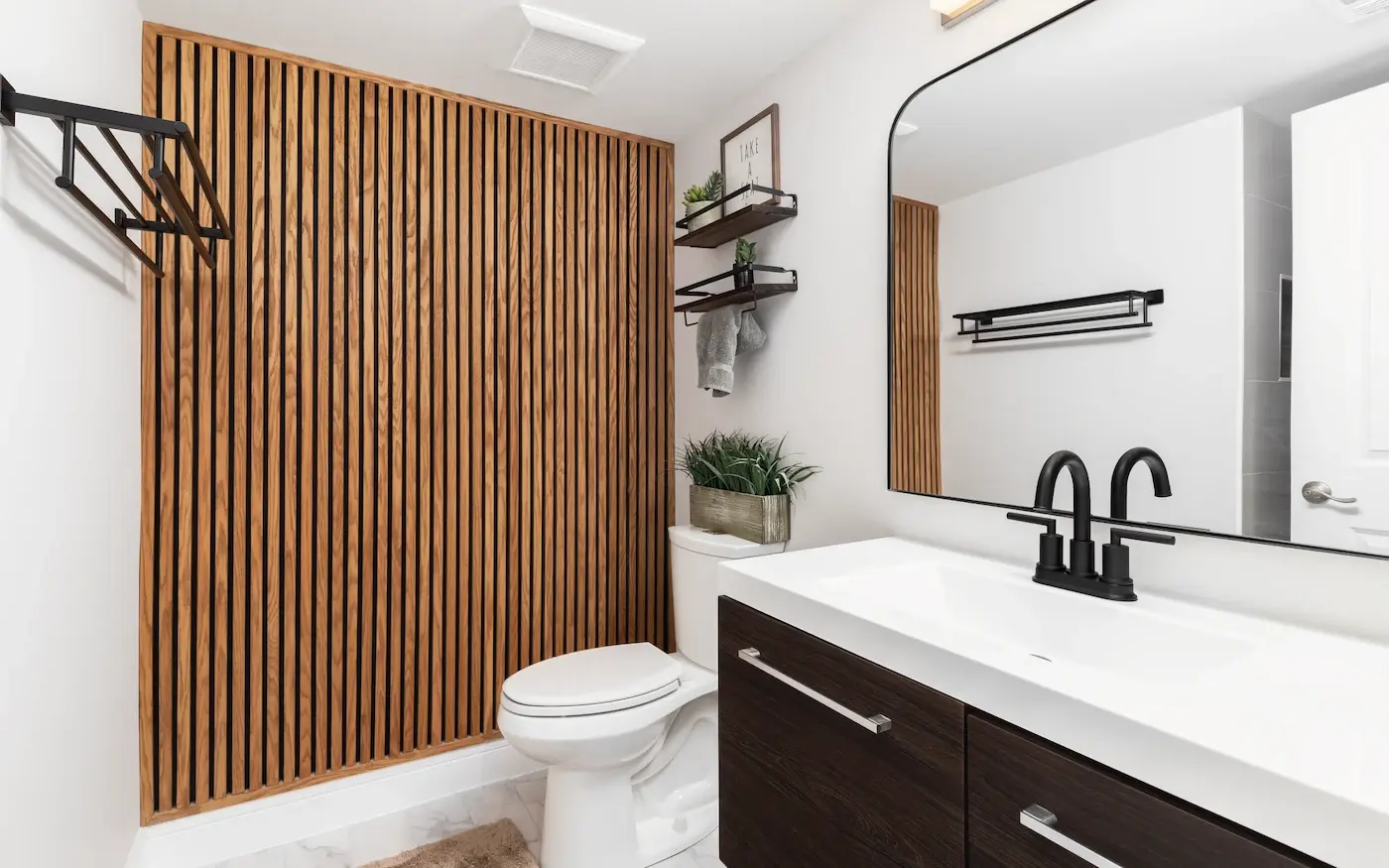
Why Bathroom Wall Panels Are Worth Considering
Bathroom wall panels are a great alternative to conventional tiles because they blend functionality and aesthetics. They are cost-effective, easy to install and maintain, and come in a wide range of designs, making them appealing to homeowners.
From subtle finishes matching bathroom furniture to durable options better suited for wet zones, wall panels can be integrated into any bathroom design. They make cleaning effortless, minimise the risk of mould, and have lower installation costs.
For those looking to upgrade their bathroom with stylish and practical solutions, exploring the wide range of bathroom wall panels at QS Supplies is a great place to start.
FAQs About Bathroom Wall Panels
Homeowners often have questions when deciding whether bathroom wall panels are the right choice for their space. This FAQ section provides quick and practical answers to help you plan for bathroom upgrades.
Do Bathroom Wall Panels Go Over Tiles?
Yes. Bathroom wall panels may be installed over tiles. This allows you to quickly renovate bathroom walls without having to clean old tiles. As a result, you save time and installation cost.
However, to achieve a watertight finish and increase durability, you must apply the right caulk and sealant around joints and edges to ensure moisture does not get through.
Are PVC or Acrylic Panels Better?
Both PVC and acrylic bathroom wall panels are excellent choices. The right option depends on your priorities and budget.
Lightweight and simple to handle, PVC panels are usually the cheapest option and best suited for alcoves and wet rooms. They can be used for quick bathroom transformations. Plus, PVC panels come in a wide range of finishes, including tile effect and wood effect, suited for different use cases.
Acrylic panels, on the other hand, provide a more higher-grade finish. They're thicker, stronger, and resilient to wear and tear. They're thus perfect for sustained use in the bathroom. Acrylic designs usually come in glamorous finishes like grey marble, white marble, matt white, and natural stone effect, good for achieving a luxury finish.
PVC and acrylic panels can give you moisture-resistant protection and a stylish design.
What Are Shower Wall Panels Called?
Shower wall panels are known by different names, depending on the context and material used. These include:
- Bathroom panels
- Wet wall panels
- Shower surrounds
- Bathroom cladding
All these terms describe the same concept: large, moisture-resistant sheets designed to protect and decorate bathroom walls.
These panels are available in various materials, such as acrylic, laminate, and Fibo. Each material offers different finishes and levels of durability. Regardless of where they are installed, shower wall panels provide a practical and modern alternative to ceramic tiles.

